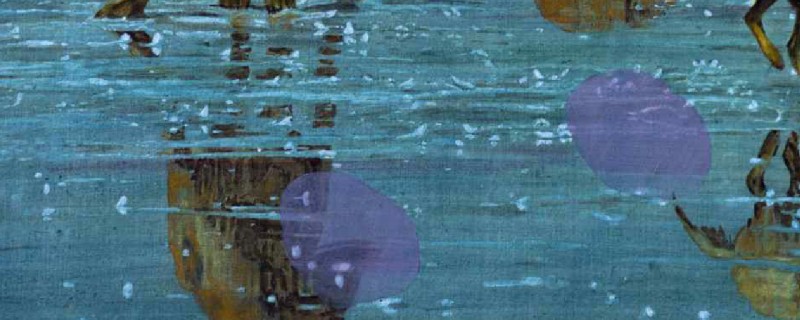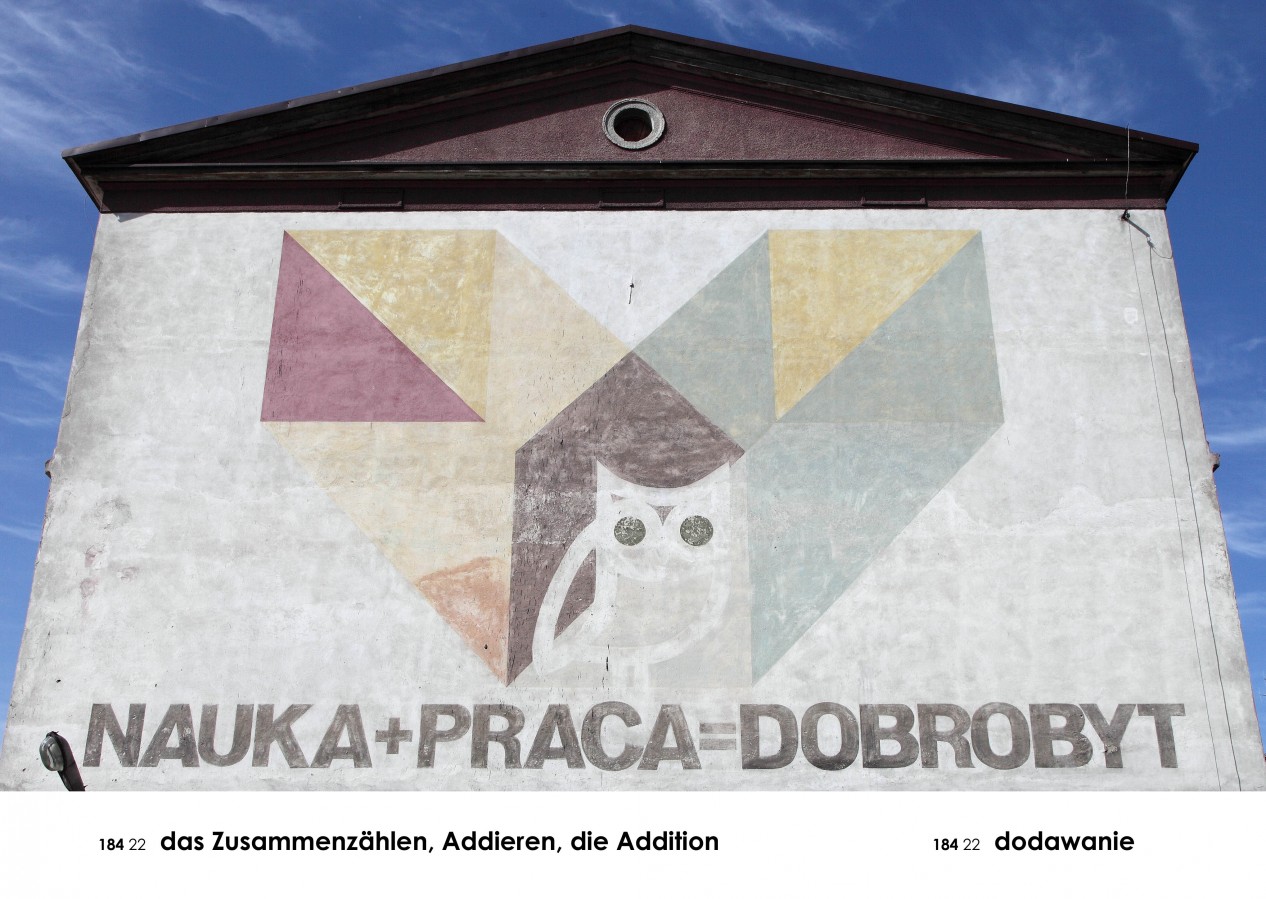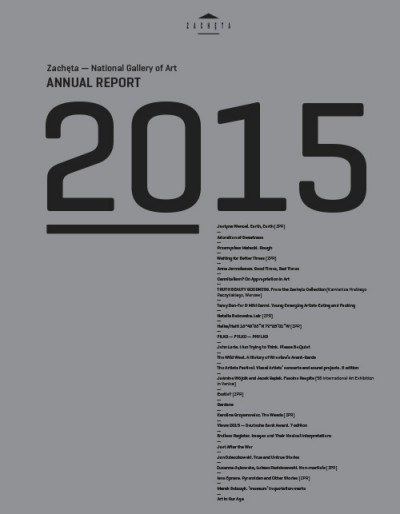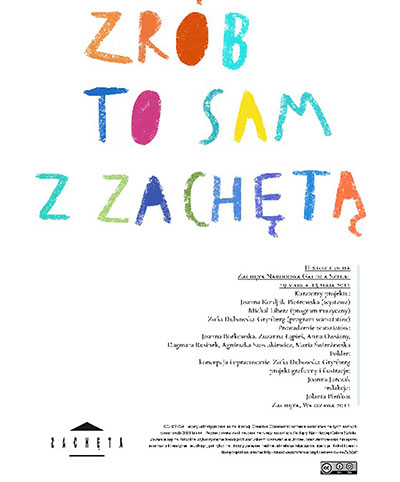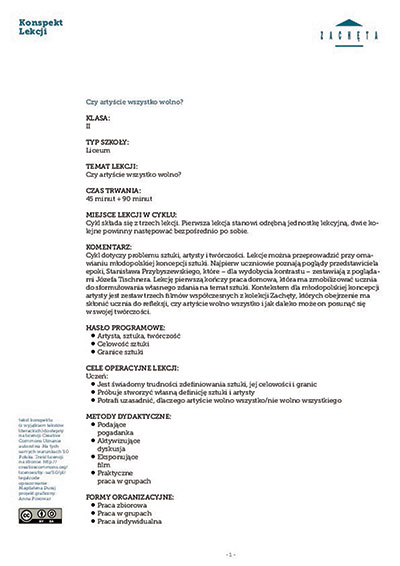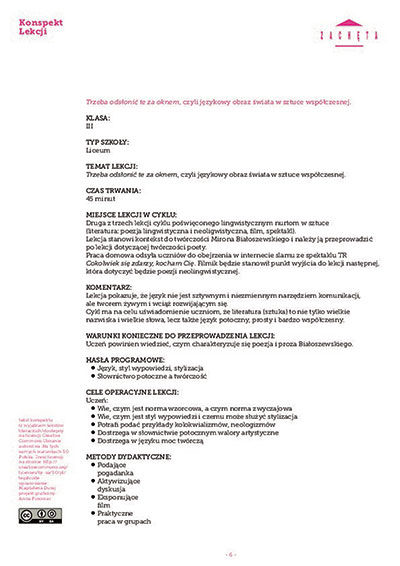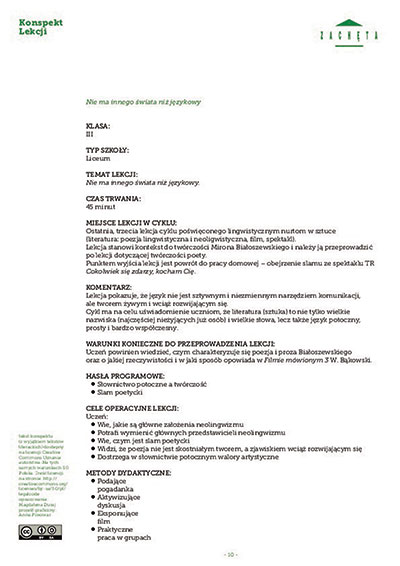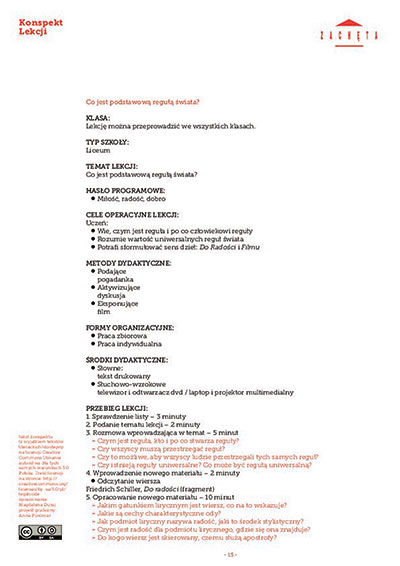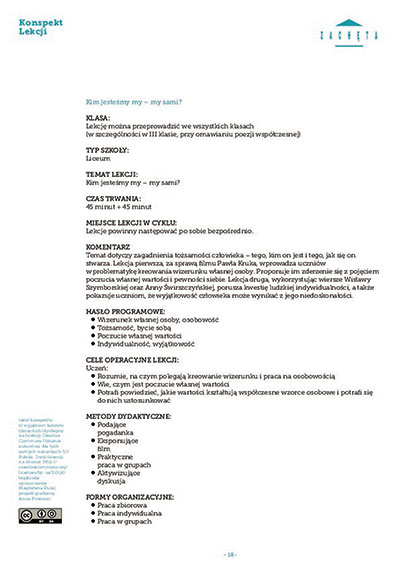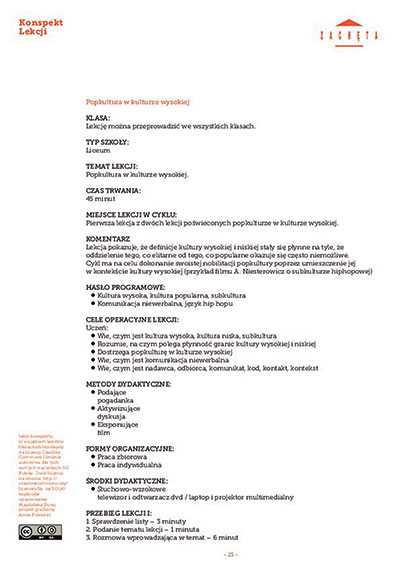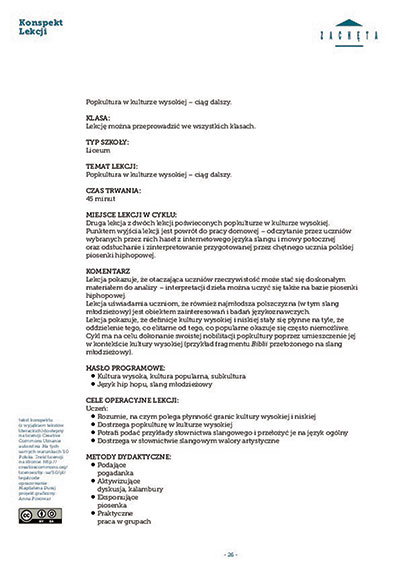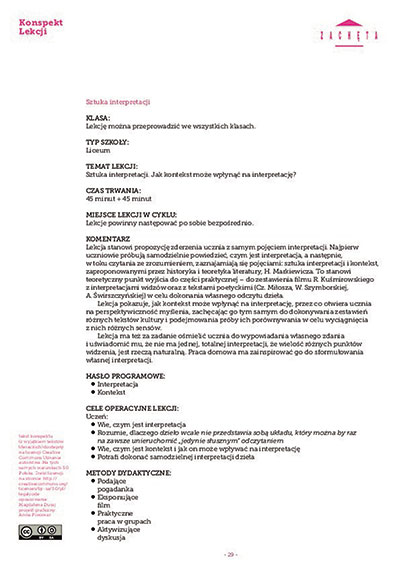Publikacja udostępniana jest na licencji Creative Commons.
Publication date: 13.04.2021
Sara Herczyńska: As part of project A–Z (Educational cabinets) you take photos of entries in the German-Polish illustrated dictionary published in Lepzig in 1954.Did you illustrate the word “didactics”?
Andrzej Tobis: The headword “didactics” isn’t included in this dictionary. It’s probably too sophisticated. “Kindergarten”, “school”, “university” – you can find such simple and specific words there. You won’t find “didactics” or “education”, or “teaching”; these concepts are too abstract. Given the very nature of this project (and due to my complicated relationship with education), didactics appears throughout the project in passing, although it is not its main focus. I’m perceptively aware of suchlike terms and was very pleased to find, for example, an illustration for the headword “school”. Education is an interesting area of public life for me. Its characteristic tendency to impose an image of reality can also be seen in religious institutions. Sometimes sports facilities also exude this didactic aura, they communicate how to live in a healthy and proper way. And monuments – they emanate a very strong desire to educate the society. Monuments are very rewarding objects for me because they are easy to hack. On their own, they have no intention to carry content, and that content can be easily replaced. Monuments expressing obsolete ideas offer yet another interesting case. They actually look forward to or demand putting them into the form of new content.
You’ve mentioned your complicated relationship with education. What is it all about?
I am an educator myself, so I know the phenomenon from both sides. The problem of art education itself is very complex: how much can you teach art if you don’t reduce it merely to the level of craftmanship? I have limited confidence in the effectiveness of arts education as a tool for teaching art to everyone. If a young person wants to become an artist, then you can walk some part of the road together. You can help at this stage. But you can’t teach them how to be an artist.
In project A–Z (Educational cabinets) you turn to using tools associated with didactics.
I used the project’s pseudo-didactic formula as a way to avoid the creative dimension of my expression, or its “artistic” character. I wanted to avoid a situation when encountering the project for the first time, the viewers recognize that they are dealing with art in the stereotypical sense of the word. If project A–Z becomes a virus that penetrates some system, it’s a great too. This sometimes happens and causes amusing misunderstandings. An art historian from Krakow that I know couldn’t borrow a book about project A–Z because “we don’t lend dictionaries”. This project probably marks the final stage of my departure from creation. But now, in retrospect, it seems more important to me that it is related to the way I was exploring reality at a very early age. I’m wary talking about it, because when you bring back childhood memories, you can easily fall into sentimentality. At an early stage of development, I wasn’t offered any formatted vision of the world, no worldview – political or religious. When confronted with the world, I was left to my own devices. But I always had access to a library. In my childish naivety, I was convinced that the written text contained the answers to all questions. Before I learned to read, I had lived feeling that I didn’t have access to this knowledge. My only aid were the images accompanying the text in the publications I leafed through – drawings, reproductions, and photographs. I was obsessed with pictures. I knew they were related to the text and contained coded knowledge that I was yearning for. So for me getting to know reality early on consisted in trying to combine images with words. It developed my imagination. Also my mind evolved some complicated paths of decoding images, which sometimes resulted in erroneous or alternative ways of interpretation. It’s hard to detect these early patterns in our mind because we tend to find them so natural that they become invisible or transparent. Returning to this early mechanism as part of A-Z was refreshing to me. Thanks to that, as an adult, I was able to redefine the reality experienced, and thus to see the world anew.
Did you like school?
It was a very interesting life experience for me. I went through the usual school traumas rather mildly. But I had a problem with education as a system. In primary school, I showed some maths skills. I liked maths and especially geometry as a good exercise to practice imagination. However, I couldn’t develop these skills because I wasn’t able to learn any rules. Even the multiplication tables. I’ve always been irritated by all sorts of rules that have to be learned and applied in a predetermined way. Project A-Z may just be an attempt to discredit such a structured vision of the world. The system that I present in it has its rigid conceptual framework, but what’s going on within that framework doesn’t quite add up, and it disintegrates. Sometimes you can see some regularity, but it can be broken by another work, another crazy example of the image-to-word relationship. Naturally, this is not assumed in advance, because none of these headwords were invented prior to the very fact of discovering an object that qualifies for photographing. So this isn’t some crusade against the systemic description of reality. This is how it happens on its own. A dictionary compiled by German editors is a very rewarding object for such practices.
In A–Zyou can see two levels of this system breaking down.On the one hand, the dictionary entries are strange, sloppy, and often badly translated. On the other hand, the objects and spaces that you photograph don’t seem to conform to any rational rules.
As I have mentioned, as part of my way of exploring the world, I have developed meanders have in my mind for my thoughts to travel. Side roads have become my favourite areas of interest. I choose places where the rules for defining reality are somewhat relaxed. Certain areas show different inner tensions when it comes to the accuracy of definition, and the relationship between reality and words. They are the margins – both literally and figuratively. But naturally, interesting objects and situations can be found everywhere. You can find something even in the most demanding areas, like in historic city centres where everything is organized and has its place, but it’s only more difficult. Maybe it is just a matter of my preferences, or maybe simple work efficiency. I prefer to go to places where, in the course of a couple of days, I can be quite sure to come across ten headwords rather than search endlessly for something interesting in Krakow’s Old Town.
How do you find these objects or spaces to photograph?
My working methods have evolved. In the first years of working on project A-Z, it was about simply being in the world with a recording tool, or the camera. Whatever naturally ensued from functioning in the world was included in the project. Then my perception focused on working on the project had to be turned on almost 24/7. It obviously couldn’t last too long, just two or three years. But at some point, this method burned out and the work on project A-Z went idle. Then I resumed painting. Going idle was also connected with the fact that I got utterly exhausted by the prolonged contact with Polish reality without any protective filters. Polish reality, and perhaps any reality experienced without a filter, can be quite tiring. I felt a strong need to isolate myself. Distance to reality is something natural for me, so I just returned to it. After some time, however, I thought that I would like to continue the project to cover at least a thousand headwords. Dictionaries always state how many thousands of headwords they have. I decided that I need to compile at least a thousand entries to call my collection a dictionary. I realized that this would be impossible the way I had worked so far. So I had to think about changing the method. I began to purposefully organize time dedicated to projectA–Z. It turned out that the most effective method was going on a few days’ trips when I could shift my perception and focus totally on my work. The ideal situation is taking one trip like that a month. In summer, the trips are longer.
And during these trips you work on project A–Z?
The process is more complicated and it’s not over in the course of these few days. I can symbolically divide the work into three stages. The first is the discovery stage, when I try to get information about potentially interesting places or objects. There are many different ways of getting information. I collect it and put the locations on the map. The second stage is operational work, i.e. a field trip around Poland. As my target destination I choose two or three of these previously selected locations. It takes me a day or two to reach the place, zigzagging way and improvising on my way there. Sometimes the object that was the target of my trip becomes part of the project, sometimes it doesn’t, and sometimes it turns out that it no longer exists. But, the vast majority of illustrations for the headwords are objects that I came across accidentally along the way. That’s the coolest thing about this job. Road movie is my favourite film genre and, in this way, I put it into practice into my own life. I find the adventure aspect quite helpful because going on a few day’s trip can be very exhausting for the body and mind. On my trips, I use the snake strategy: “absorb as much as you can to digest it later”. After returning home, the third stage begins: analytical. I analyze the collected material, trying to match it to a specific dictionary headword. It’s not always possible to find a good connection. Sometimes an interesting photo doesn’t make it to the dictionary.
The 15 years spent on the project have also been an interesting period in the history of civilization. In 2007, I travelled around Poland with a paper atlas. Since then, various geolocation tools have become available, such as Google Street View orsocial media as a surprisingly rich source of information. That not only makes it easier to locate the objects, but also helps with travel logistics. I no longer have to spend the night in the forest near Stalowa Wola, because a special app helps me find accommodation in a matter of a few minutes.
Are there any headwords for which you specifically looked for illustrations? Does image always go first?
There is no single method. Sometimes I’m looking for a headword to match to a photo, and sometimes the other way around. Some headwords are completely ordinary – the word “shoe”, if not accompanied by any adjective, doesn’t include any specific context in itself. The obviousness of this word means that you don’t put much effort to remember it. But some entries are distinctive, peculiar. For example, the word “plimsoll” sounds slightly archaic and therefore it got stuck in my memory. A few days ago I was in the Hel peninsula and went to the beach to take a look at the sea. A shoe was lying on the empty beach, the only object on the great stretch of sand. The context of the situation turned an ordinary shoe into a sand shoe. The definition has found its illustration. The oddity of some of the headwords makes them seem impossible to illustrate. That was the case with the “light bath for the head.” I remembered this term because it sounds like a poetic phrase. When I came across the right object, I knew that was it. If I hadn’t had the term in my head, I wouldn’t have paid attention to the object I saw.
What was that object?
A lamp and a large pictogram of man that you can see above the entrance to the public men’s toilet. The man was there first, the lamp was installed later in such a way that the man’s head was “hidden” in the lamp. When the lamp was lit in the evening, the man’s head bathed in light inside the lampshade. The description may sound complicated, but the object creates a clear relationship with the term. A display cabinet with the entry is held in the collection of the Museum of Photography in Krakow.
You’ve said that a lot has changed in your work method over these 15 years. Has a lot changed in the reality that you document too?
An additional factor that prompted me to resume intensive work on project A–Z was the realization that the transformation in Poland was still going on, only its direction had changed. Initially project A–Z was described as a thing about transformation. Back then, I felt that I was a bit late. After all, it was already 17 years after 1989. In the course of the next years, this feeling intensified, it seemed that Poland was simply becoming one of the boring, stable European countries. But in 2015, a political change took place, a sharp shift to the right. An alliance of secular power with religion became a factor shaping social life. Visual representations of this alliance began to fill public, and sometimes private spaces. I saw that Poland was transforming again. Now reality is as painful as ever, but other things keep vexing me. A–Z again began to function as a private debate with my own country, with which I have a complicated relationship. It’s very disturbing when someone tries to impose the only right vision of Poland on me. I don’t need anyone to teach me what patriotism is. I understand what that word means. I don’t litter in the woods. I love the Polish language.
What changes prompted you to return to project A–Z?
At the national level, it was an attempt to change the system. After 2015, Law and Justice (PiS) began to build Poland anew – a new Poland, a new Pole, and a new history. This is a false narrative, because it is not about a new Poland, but about trying to carry out a fantastic vision based on an anachronistic sentiment. The strong dissonance between what’s imagined and what’s real has a national dimension. That’s why for me as the author of project A-Z Poland has become again an area of interesting observations. Of course, as a citizen, I’d prefer it to live a boring country like Norway.
A-Z is often associated with hauntology, as project bases on photographing relics of the past.However, the new display cabinets often contain a record of the new changes or current events.
The re-transformation that I mentioned is also reflected in the new objects. In A-Z,the present is mixed with the past, often within one frame. These realities overlap or mutate one into the other. For example, in the town of Drezdenko I came across a monument: an eagle on a pedestal, clumsily made of metal. This monument had clearly been erected recently, in the wake of turbo-patriotism, but I felt I had seen it somewhere before. I photographed it. Then I remembered that I had once seen it in one of the photos in Władysław Hasior’s archive. I managed to find this photo. It turned out that the eagle was part of a decoration or a monument erected on the market square in Drezdenko on the occasion of the 20th or 30th anniversary of the People’s Republic of Poland. And this communist-time eagle had been lying somewhere for decades and now it was pulled out, made public again, but in a different context. Some retro objects disappear rapidly, others slowly, as part of a graphic decay process. Few are trying to find their way into modernity. Reality is constantly evolving and these transformations are the most interesting.
Can you see the possibility of closing the project?
The dictionary I illustrate has about 17,000 headwords, so illustrating it all is physically impossible. From the beginning, I knew that this was a completely utopian job, doomed to fail. This awareness is very relaxing – there is no need to stress out, as it’s clear you won’t make it. As of March 2021, there are approximately 1,300 found headwords. So far, every time I go around the country, I come back with something new and it is interesting to me all the time. These trips have already become a kind of addiction that I can’t deny myself.
-
19.04 – 08.06.2021Live Storages: Didactics
The presentation Living Storages: Didactics was created as a result of a discussion about the items in the Zachęta’s collection that were the most interesting to us — the guides and educators working with people of different ages, backgrounds, and needs.
Zachęta – National Gallery of ArtZachęta
